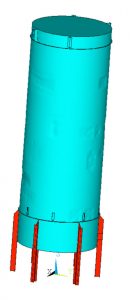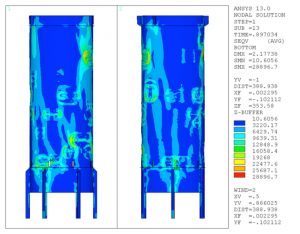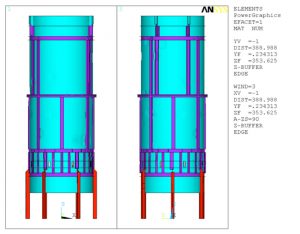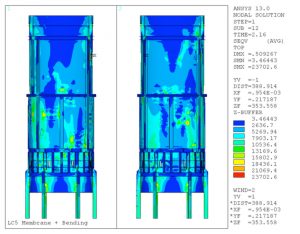The scope of the analysis was to perform Fitness For Service (FFS) analyses and to provide a repair plan for a vertical heater. The heater shell had reduced thicknesses and severe deformation along the longitudinal and the circumferential directions (dents, gouges, and misalignments). The analyses were to consider the deformed geometry and the reduced shell thicknesses. The analyses utilized the loading prescribed by the customer, including the increased weight due to modification of the convection section. Modifications to the convection box section and the stack positioned on the top of the heater resulted in an increased weight of the convection section.
Fitness For Service analyses were performed to study the structural integrity of the heater for the current condition per API 579-1. Based on the results of these analyses, structural members were added to the model, and the new design was analyzed by performing Fitness For Service analyses under the operating conditions, including the exposure of the heater to the wind loading from several directions. Thermal analyses were performed for various conditions to verify the structural integrity of the new design. Due to the time constraint, the customer was unable to complete the attachment weld of all the structural members to the shell before the repairs to the vertical radiant coils were completed. Therefore, the minimum required weld length for the structural members was determined considering a maximum wind speed of 45 MPH.
- Geometry of the Initial State of the Heater as Measured by the Customer
- Membrane + Bending Stress for LC 1 – South View and North View
- New Design with Reinforcing Structural Members
- Membrane + Bending Stress for the New Design – South View and North View




